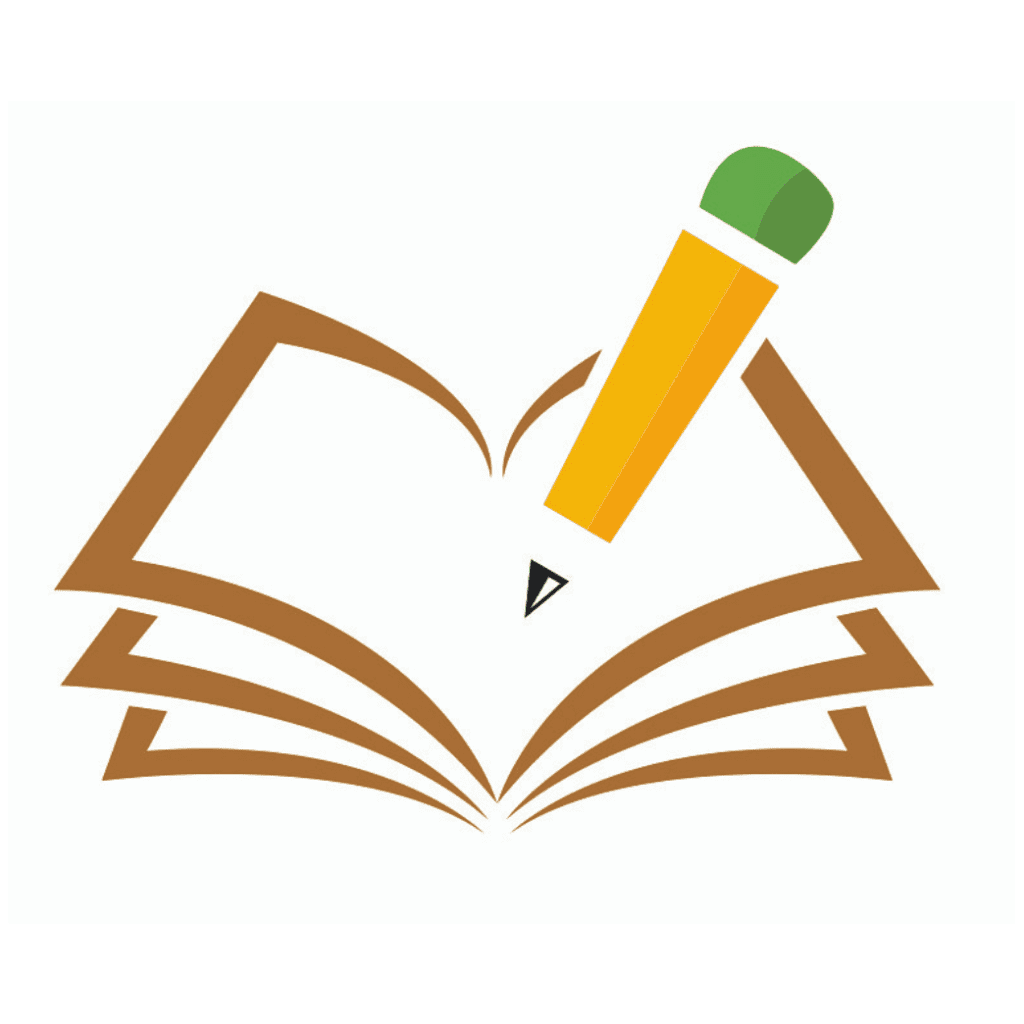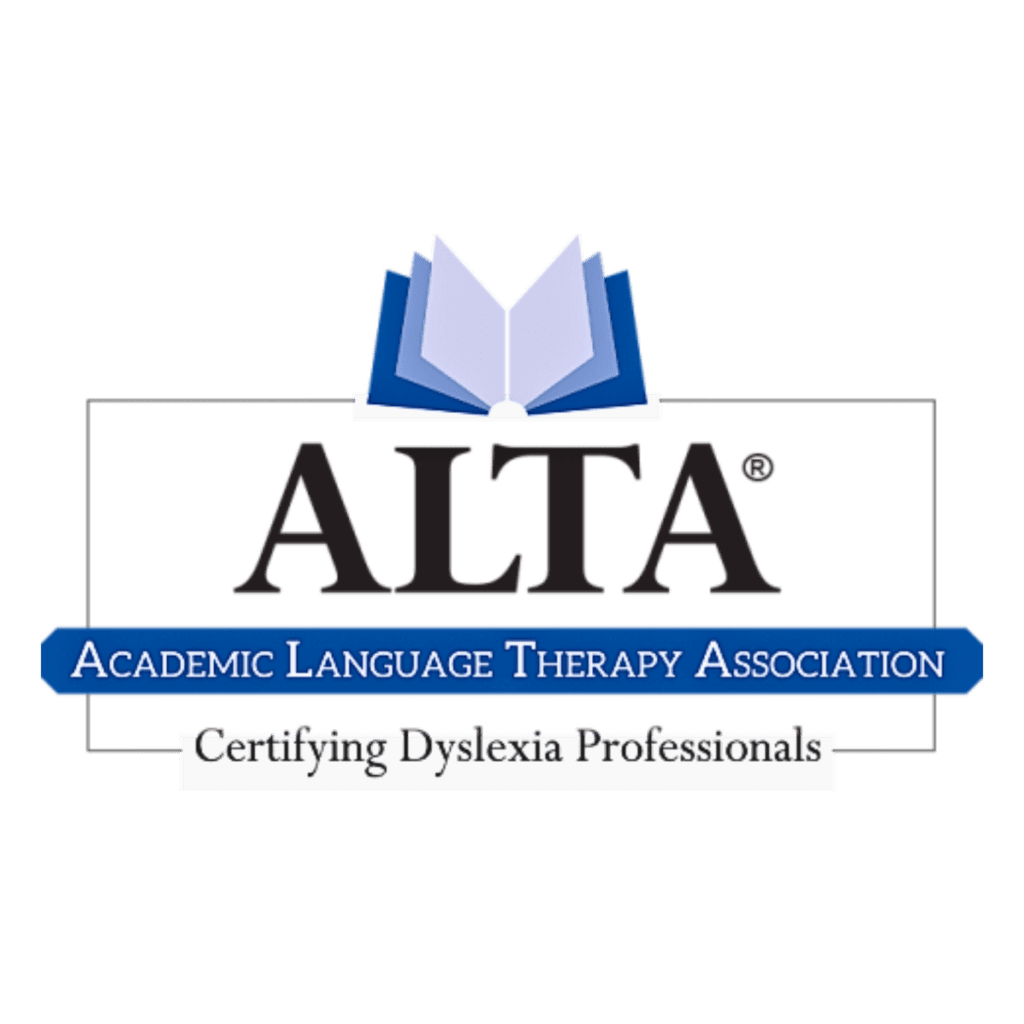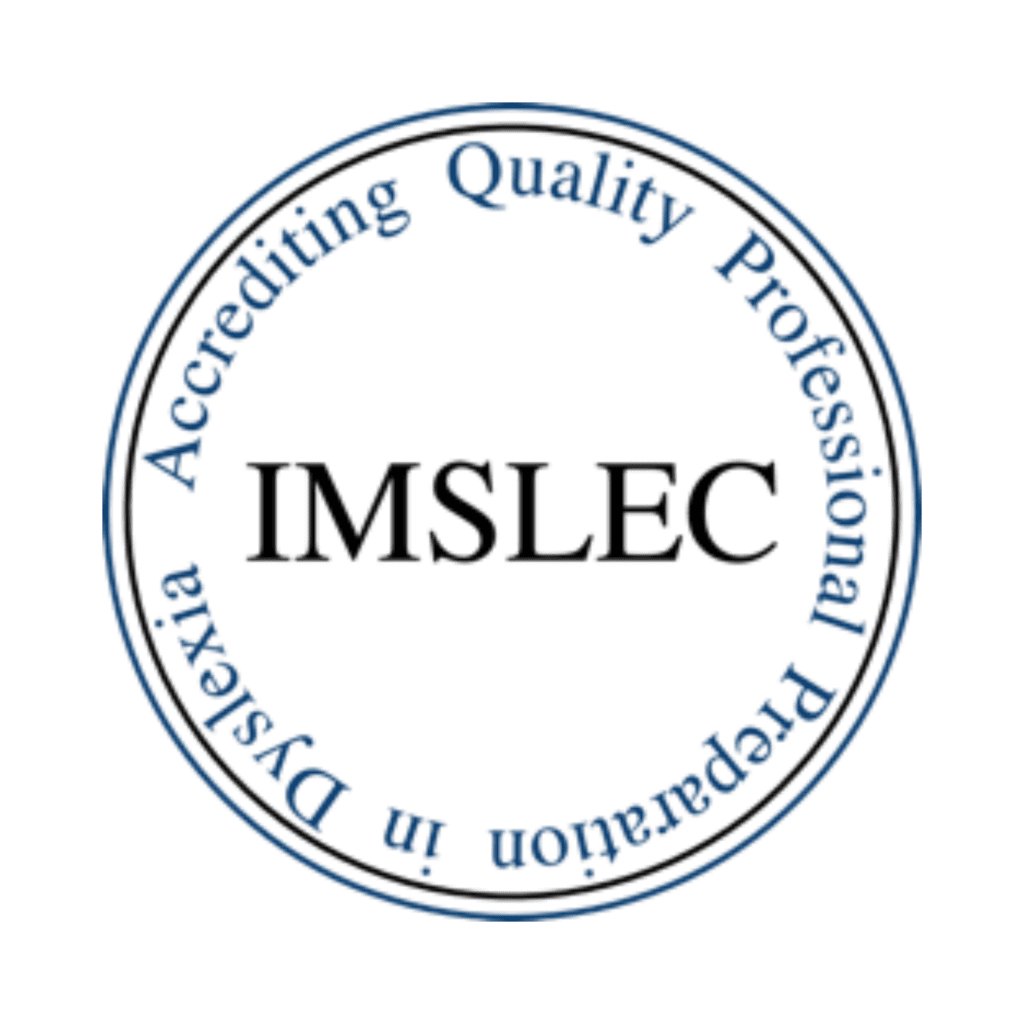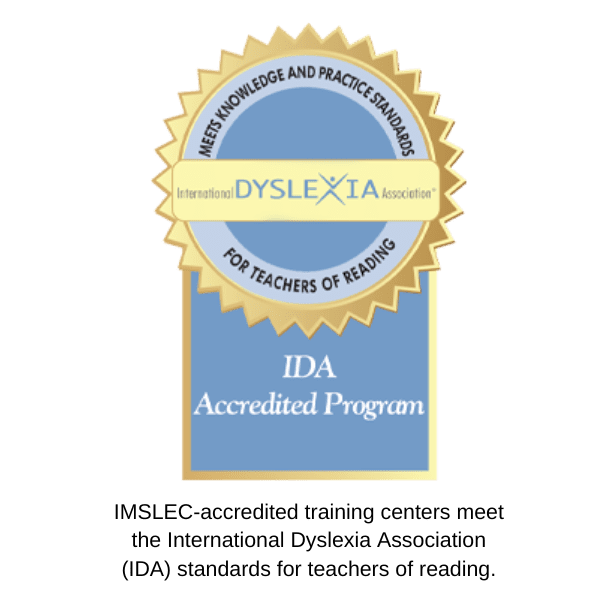Academic Language Therapy instruction is explicit, structured, systematic, and cumulative Take Flight lessons that contain the five components of effective reading instruction identified by research from the National Reading Panel. Take Flight is a comprehensive Tier III intervention for students with dyslexia.
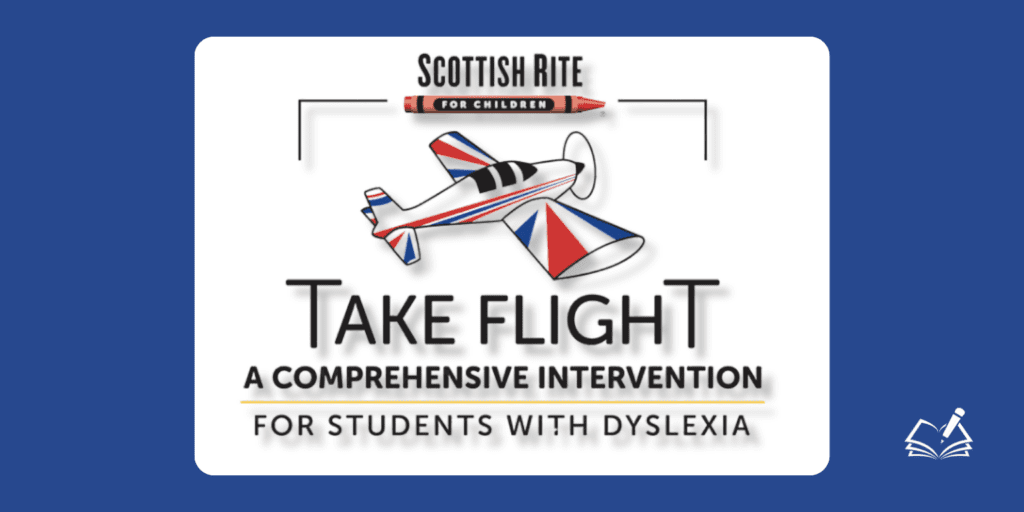
5 COMPONENTS OF EFFECTIVE READING INSTRUCTION
PHONEMIC AWARENESS
Follows established procedures for explicitly teaching the relationships between speech-sound production and spelling-sound patterns.
FLUENCY
Uses research-based methods that are applied in repeated reading of words, phrases, and passages to help students read newly encountered text more fluently.
PHONICS
Provides a systematic approach for single word decoding. Students learn 96 grapheme-phoneme correspondences.
READING COMPREHENSION
Students are explicitly taught how to apply and articulate multiple comprehension strategies for narrative and expository text through cooperative learning, story structure, question generation and answering, summarization, and comprehension monitoring.
VOCABULARY
Features multiple word learning strategies (definitional, structural, contextual) and explicit teaching techniques with application in text. Students learn 87 affixes with an emphasis on English morphology, which includes a study of Latin roots and Greek combining forms.
What does a daily Take Flight lesson look like?
Alphabet
Identification of the letters of the alphabet is an important early literacy skill because it is the foundation for developing reading, writing, and spelling skills.
Multimodal Introduction
Letters, letter clusters, and concepts are introduced for reading, writing, and spelling through six auditory and discovery linkages.
Phonemic Awareness
Explicit procedures are established to teach the relationship between speech sound production and spelling sound patterns.
Reading Practice
Decoding strategies are applied to develop accuracy, fluency, and comprehension. Grapheme introductions are presented in a logical sequence based on the highest frequency and progress to the most complex and irregular patterns.
Reading Decks
Reinforcement to identify and instantly name each grapheme and translate it into a speech sound.
RAP
Students develop fluent and effortless reading through repeated, accurate practice of simple and complex graphemes.
Connected Text and Listening
Students and teachers read high-interest text to increase listening, comprehension, and vocabulary skill development.
Automaticity and Fluency
Fluency practice begins with students reading at the most basic word level, then moves to phrases and sentences, and continues to more complex structures. Rate and prosody are developed by having students follow a repeated reading schedule that introduces word patterns in isolation, phrases and several paragraphs (stories).
Instant Words
To help students develop accurate and automatic word recognition, they practice reading 300 of the most frequently used English words based on Edward Fry’s research.
Comprehension
Students are explicitly taught how to apply and articulate multiple comprehension strategies for narrative and expository text through cooperative learning, story structure, asking and answering questions, summarization, and comprehension monitoring.
Spelling Practice of Words, Phrases and Sentences
Students learn to spell words, phrases, and sentences. They learn to apply the most common spelling rules through specific procedures.
Instant Spelling Deck
Reinforces the translation of the 44 speech sounds instantly into the grapheme that most frequently represents each sound in the word’s position.
Handwriting Practice
Cursive handwriting is the cornerstone for reinforcing a multimodal approach to learning to read, write, and spell. Emphasis is placed on learning approach strokes, proportion (size), directionality, and proper grip, which leads to automaticity in written expression.
Verbal and Written Expression
Students are engaged in comprehension activities that develop receptive and expressive oral language skills, enhancing written expression.
The History of Language (Etymology)
Understanding the origin of English words and how they influence pronunciation and spelling provides a framework for understanding the layers of the English language. Students learn high-utility affixes, Latin roots, and Greek combining forms to enhance morphological awareness, comprehension, and vocabulary acquisition.
Review
The lesson culminates with an activity reviewing the day’s new learning and previously taught concepts.
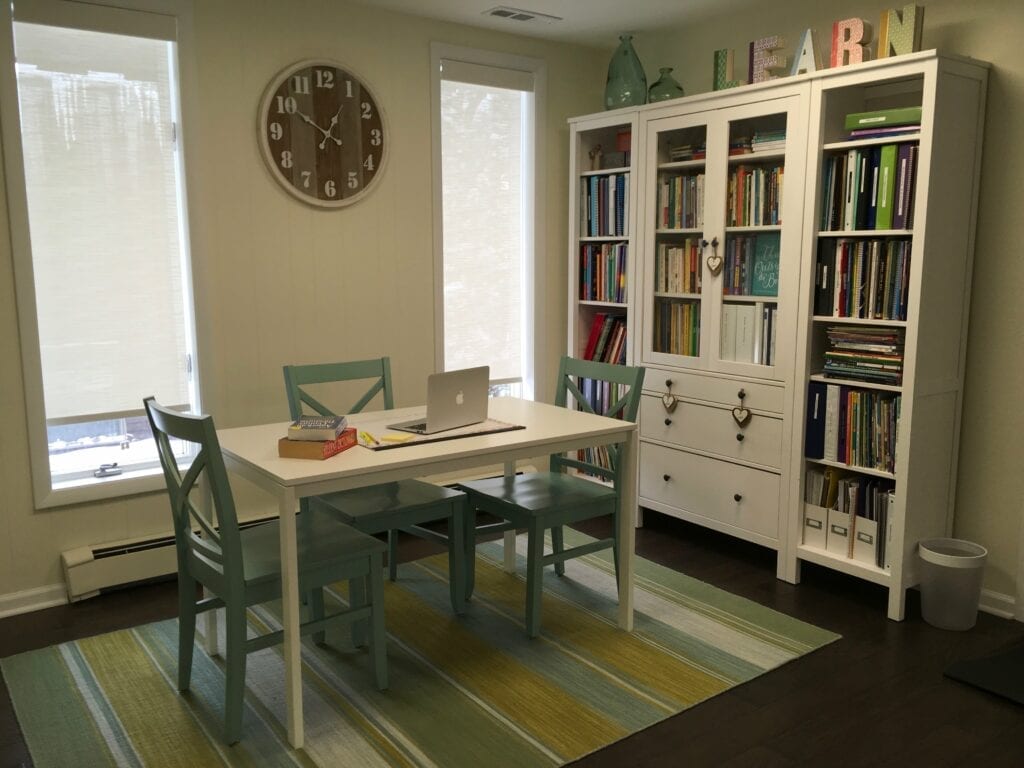
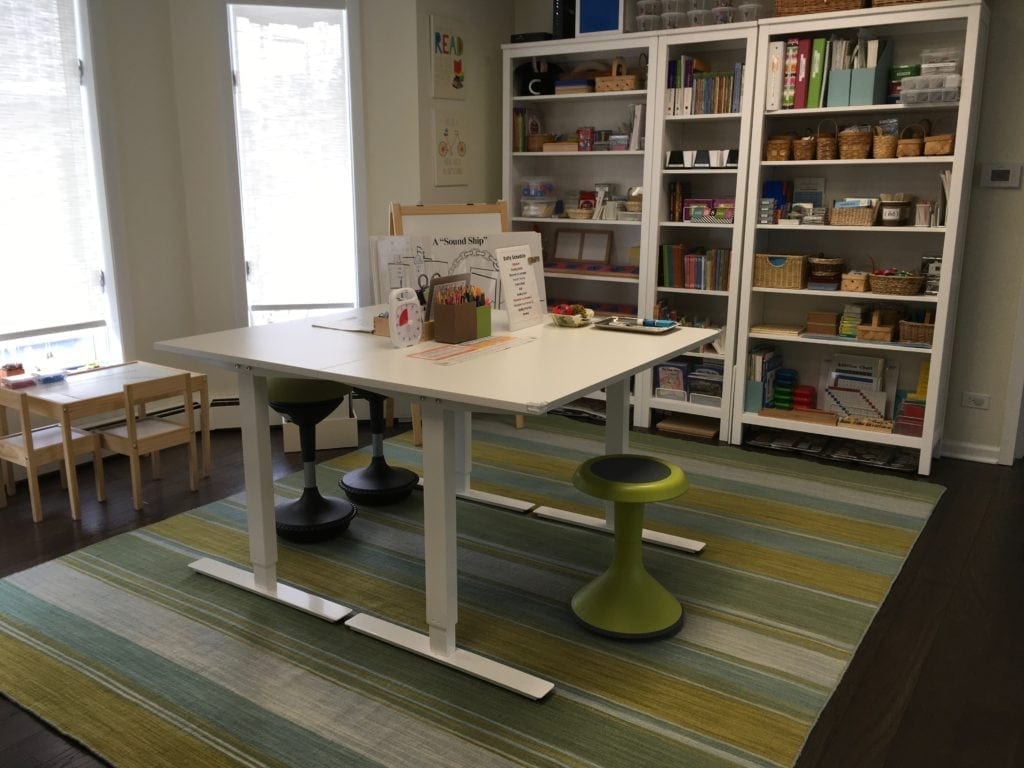
Read Our Parent Testimonials
The complete transformation that we have seen since our son started working with Mrs. Chapman has led to our decision to have him continue working with her for as long as possible. Mrs. Chapman has a very warm, approachable way about her, and makes our son feel at ease. She has always been professional and kind to us, answered all our questions. Mrs. Chapman is also very open to meeting with teachers and principals to help them understand what she does, and why dyslexic students need accommodations. K.P. and B.P.
MEET THE QUALIFIED INSTRUCTOR (QI)
- Co-Founder of The Written Word Center for Dyslexia and Learning
- Certified Academic Language Therapist (CALT)
- Qualified Instructor (QI) of Take Flight: A Comprehensive Intervention for Students with Dyslexia.
- Certified Public School Elementary Teacher, WI & AZ
- Certified Montessori Elementary Teacher
- B.S. Elementary Education
- M.S. Curriculum and Instruction – Reading
- ALTA Illinois Chapter Board Member
STEP BY STEP: GETTING STARTED
Interested in Academic Language Therapy? This is how you get started.
STEP 1: CONTACT US
Fill in the contact form below and submit.
STEP 2: MEET AND GREET
You will be contacted to arrange a day and time for you and your child to meet with me.
STEP 3: ENROLLMENT APPLICATION
Once your child is accepted as a student, you will receive communication with instructions to fill out an enrollment form.
STEP 4: SCHEDULE YOUR LESSON
After your enrollment form is received, the days and times of your lessons will be scheduled.
STEP 5: ASSESSMENTS AND BEGIN LESSONS
Before academic language therapy instruction begins, baseline assessments will be administered to develop an individualized instructional plan.
CONTACT TARA
Kindly provide more details, and Tara will reach out to you within the next few business days.
